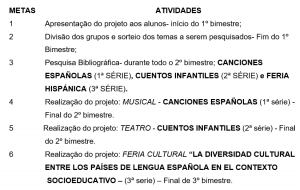ORIGINAL ARTICLE
MALDONADO, Gabriel Orlando Quiñones [1]
MALDONADO, Gabriel Orlando Quiñones. Analysis of the discursive sequence in the message from the President of Brazil transmitted online by Broadcaster Jovem Pan in the radio program Os Pingos nos Is. Revista Científica Multidisciplinar Núcleo do Conhecimento. Year 05, Ed. 10, Vol. 20, pp. 135-143. October 2020. ISSN: 2448-0959, Access Link: https://www.nucleodoconhecimento.com.br/lyrics/sequence-discursive, DOI: 10.32749/nucleodoconhecimento.com.br/lyrics/sequence-discursive
SUMMARY
This article is based on the area of Interactional Sociolinguistics and is the result of the analysis of the discursive sequence of courtesy or rudeness in the presidential message of the President of Brazil, Bolsonaro. The oral corpus constituted by the oral interaction of the president with the reporters of Emissora Jovem Pan of the radio program Os Pingos nos Is on the weekly live on May 28, 2020 was collected as a reference. The discursive messages used by political representatives are messages spread to a immediate and easily accessible public as well as to an international society. Politicians present their messages to the people with the ability to have their speech conveyed with courtesy or rudeness. In most political speeches or interviews, they tend to break the interactional order due to evasion of questions. Politicians deal with the answers that the recipients want to know, responding from another point that favors them and does not harm them politically. This article aimed to analyze the discursive sequence of courtesy or rudeness in the presidential message that highlighted the theme of the coronavirus pandemic. The analysis reveals that order and thematic balance were maintained in view of the development of oral interaction in the program Pingos Nos Is by Jovem Pan.
Keywords: Interactional Sociolinguistics, discursive sequence, political discourse, courtesy, discourtesy, COVID-19.
1. INTRODUCTION
Speech requires an interactional order that is always polite, decent and respected, no matter how simple and reliable they are with those with whom they interact. Interaction should have healthy intentions of producing a serious and appropriate conversation. Under no circumstances, in the professional field, one should refer to people by surname, so one can maintain respect and formal interaction of discourse. The knowledge acquired based on Gumperz’s readings is a great contribution to understanding the different social interactions that occur daily in our professional life or in our work.
According to Gumperz (1982, p. 43),
Lexically acquired knowledge of idiomatic expressions, greetings, openings and closings of conversations, as well as knowledge of social categories of speakers and audiences and relevant behavioral norms, also play an essential role. By examining the results of conversational exchanges and interviewing participants to determine the perceptions of verbal cues and the social assumptions underlying their judgments, it is possible to obtain empirical data on the interaction of social and grammatical factors in verbal behavior.
The available resources contribute to the understanding of discursive interactions and to better understand the starting point of the different interactions. In the professional sphere, teachers, linguists and researchers, with these resources provided by Interactional Sociolinguistics, can better understand their students. In addition, achieve the implementation of good conversational interaction practices. According to Goffman (1961, p. 81), “to be awkward or unkempt, to talk or move wrongly, is to be a dangerous giant, a destroyer of worlds.”
2. VERBAL RITUALS AND COURTESY: MAINTENANCE OR ALTERATION OF THE INTERACTIONAL ORDER
Courtesy is the basis of all communication. When one uses words as a means of communication, one can include in this transmission much of the personal essence; therefore, it is important to use courtesy as one of the universal values. In written communication, one could complicate with the process of transmission of different emotions, since the text is subordinated to individualized interpretations. However, it is true that written communication is important, the same relevance has conversational interaction. Interactions with a general objective should have a process of prior analysis, in which it is internalized; what is said, to whom it is addressed and the repercussions of the message of the words interacted. We often greet for social commitment, but these greetings are not intended to generate an interaction for the maintenance of a formal or prolonged conversation.
The words of courtesy, included in the discourse, should have a tone that describes the emotion that carries this particular intention. Verbal and courtesy rituals may vary depending on the scenario in which the announcer and interlocutor are developing conversational interaction. The implementation of courtesy can be spontaneous and natural or it can be an act of reaction to an unexpected situation. A very simple example of implying an act of courtesy in the face of an unexpected situation could be this: when someone goes to a funeral of a known person, but does not know the family members. From the first intention, the person knows that the situation in which he is developing is painful and sad, and where the other people present need a comforting interaction. With that in mind not to be discourteous, one begins to select words of courtesy that satisfy what the environment requires. When, on the contrary, he finds himself in the same situation, with the only difference that the deceased was a known person, the words of courtesy begin to flow naturally projected by personal emotions.
3. ANALYSIS OF COURTESY AND DISCURSIVE DISCURSIVE SEQUENCES OF COURTESY AND COURTESY
It analyzes the transmission of the program Pingos Nos Is of the station Jovem Pan. This broadcast was broadcast live on May 28, 2020. This radio program is part of the station Jovem Pan and makes the rebroadcasts on Youtube. The program was presented by one of the main announcers, Vitor Brown. The other three announcers did the job of interviewers; Augusto Nunes, José Maria Trindade and Guilherme Fiúza. The program always opens the space to broadcast the message of President Jair Bolsonaro to the country.
According to Gumperz and Cook-Gumperz (1996, p. 10),
the initial task in the analysis is basically ethnographic, of collecting real instances of interactive situations containing all the internal evidence to document the results. Recordings of public meetings or public broadcasts on site provide a good first source of materials. Because it is often impossible to collect the basic information needed for the later steps of the analysis, field work is also required.
On that day, they made the presidential message live and was conducted by the cast of aforementioned announcers. The interactional order of this transmission was within the good practices of the discursive procedures organized by the station and executed by the announcers. According to Almeida (2008, p. 8),
in the interactional framework constituted by the actors of radio conversations, we found that, in this interactive and interlocutive context, the participants trigger a system of practices, social conventions and rules of discursive procedures that organize the thematic flow of interactions.
3.1 CORPUS OF INTERACTION ANALYSIS
Theme: Exclusive: Jair Bolsonaro speaks to Os Pingos nos Is during weekly live
Date: May 28, 2020
Speaker: Vitor Brown
Interviewers: Augusto Nunes, José Maria Trindade and Guilherme Fiúza.
Interviewee: President Jair Bolsonaro
3.1.1 FIRST INTERACTION ANALYSIS
Presenter – “Augusto wants to ask the first president question on the wiretap”.
Augusto – “I do it! Do! Mr. President, our Pedro Guimarães forgot to… the vice president of legal entity of the savings box was once the Geddel Vieira Lima in the Dilma government. So, you must have done it or tried to do some work there right! I wanted to ask the president this: it’s… the great epicenters of the pandemic in Brazil, are states ruled by opponents of the lord.”
President – “Augusto if you know that the supreme court has decided that who, (pause) closes or does not begin, are the states and municipalities. I wish I could participate is all this so that the supreme of is said that each municipality decided what to do because it is in some local governor, governor fighting with, with the mayor is! So this opening’s late. (…)
Presenter – “President, who will ask the question now is Guilherme Fiúza who joined our team here from Pingos Nos Is this week debuted on Monday will now ask the next question”.
Guilherme – “Good night president. It’s good, following the subject pulled by Augusto Nunes. (…) I believe that the government will have to make a breakthrough is not an acceleration the deepening of its reforms right I know that this is the subject of the ipiranga post (laughs of the president). But I wanted to ask you here, if we have some measures on the horizon on this kind of deepening, strengthen, certainly the government will, and if there is something in line to expand the privatization program of state-owned enterprises in Brazil.”
President – “We started fair, thank you for the opportunity. Starting at the end (…)”
In this first analysis, Guilherme respects the conversational order of the interview. He introduces himself and says good night. Then, in the continuation of his speech, Guilherme talked about the “Ipiranga post”. Then, the president and his cabinet team looked at each other and laughed, as Ipiranga is a Brazilian fuel company. According to UOL News, “the term “Posto Ipiranga” was given by Bolsonaro to the minister, still during the election campaign in 2018, to define him as the assistant of all responses to the economy in a possible government.” The president takes the floor after Guilherme asked him the question. In response, the president appreciates the opportunity to respond to you. With this expression of the president, we see again that the parameters of courtesy have been respected. In conversational interactions in interactive radio interviews, there should be a consensus between the announcers and the interlocutors. The main announcer allows interaction between other announcers and, likewise, cordially, between the president. According to Goffman (1959, p. 10), “I will refer to this level of agreement as a working consensus.”
3.1.2 SECOND INTERACTIONAL ANALYSIS
President: “you’re going to ask for the break, and I respect your break…”
Presenter: “that’s it president we’re going to do a… (the president interrupts)
Mr. President, “I’m going to have a glass of milk at halftime.” (laughs)
Presenter: “beauty, combined! It’s a minute and 20 apart will not pass this is president we have to make this interval is commercial commitment so we do the break quickly, soon I’m a conversation with President Jair Bolsonaro live here, come on!”
In this second analysis, the president notices the warning on the monitor that a break is coming and gives the floor to the presenter. The president explains that he respects the range. In this section, it is seen that it respects the rules of an interactional order that everyone should have in the program. The presenter quickly picks up the word saying “beauty, combined.” Since the president had interrupted to say he was going to have a glass of milk at halftime. The time of the break was already announced and the presenter needs to move on to commercial appointments.
In another point of view, the act of expressing that he would take a glass of milk in commercials while laughing with his team, is perceived as sarcasm. Although everyone laughed at the expression, transforming the atmosphere with some humor, you could understand that it was with some other intent. According to Rocha (2020) in the interview with Adriana Dias, she says that she holds a PhD in social anthropology from Unicamp (State University of Campinas) and that for years she has been researching the phenomenon of Nazism, there is a clear reference between the episode and neo-Nazism. “Milk is all the time neo-Nazi reference. Take white, become white. He’s going to say it’s not, it’s about the challenge, but it’s a scene game, like they always do,” he told the Forum.
They could convey another message, such as how the program was going to leave the president waiting for commercial announcements, or how for a break he should be on hold so he can continue with his political-presidential discourse.
Also, Duarte (2005, p. 294-295), says that
the announcer and allocutário share knowledge and beliefs prior to the moment they communicate and, if this is valid for verbal exchanges between actors who are politicians, it is also for the journalist who writes a text and the piglets who read it.
In this passage, there was a change to the interactional order by the cause of the same President of Brazil.
According to Fonseca (1992, p. 48),
the comprehension of the text develops on the basis of this interaction between the verbalized and the universe of knowledge of the receiver. The capture of the global meaning of the text – which involves, as seen, the capture of the microstructural and macrostructural connections drawn in its space – depends on the ability to reveal the receiver to connect the facts, the events…
3.1.3 THIRD INTERACTIONAL ANALYSIS
Presenter: Good, back. After our break we are back here with President Jair Bolsonaro exclusive live interview here for you accompanying the Pingos Nos Is. I think the president already took the milk he was going to take. Okay, you hear us already president, everything’s ok there right.
President – I think he’s back.
Presenter – So I’m going to ask the next question for the president. I wanted to speak the following gift, from now on little in the … Do you hear the president? But that he’s making a gesture there I don’t know if she’s still
President- Okay, that’s okay.
Presenter – Okay, fine. Let’s go then. the president now just live you were talking about fake news or in need to get out circulating circulating in the press brought several examples I want to bring one more here for you to tell us if it proceeds or not.
Upon returning from the break, the presenter resumed the speech and said “I think the president has already taken the milk there that he was going to take.” The presenter resumed the word with this phrase, implementing a discursive strategy of humor. However, the president had not realized that he had returned to the live stream. According to Almeida (2010a, p. 7),
In segments of greater polemycity, there are also more threatening acts of the faces of the auditorium less appropriate to the social conventions of courtesy that constrain the radio announcer to produce acts with the ilocution value of warning or advice that coexist with the realization of discursive strategies of humor.
4. CONCLUSION
In linguistic studies and interactional sociolinguistics, it is essential to learn acts of courtesy and discourtesy. The inclusion of these studies, not only for advanced studies, but also for students of foreign studies, Portuguese considered very important. Maintaining the interactional order is essential to avoid misunderstandings when it comes to speaker-interlocutor communication. Knowledge and good use of discursive strategies such as acts of courtesy in our interactions could avoid oppositions between the workers. This act of courtesy could suppress some confusion by putting into practice discursive skills. From the point of view of Pragmatics and Interactional Sociolinguistics, I identify that in the different excerpts analyzed above, courtesy strategies were used in the discursive interaction between the different interlocutors (main announcer, secondary announcers – interviewers, interlocutor – interviewee).
In most speeches or political interviews, they tend to break the interactional order due to avoidance of questions. Politicians deal with the answers that recipients want to know, answering from another point that favors them and does not harm them politically. The ‘conversational involvement’ is the interaction of a minimum of two people (announcer and interlocutor), transmitting or receiving a variety of information of mutual interest. In the interview with the president, conversational involvement was shown, constituting it as an interactive and ideal when it comes to making analyses and comparations of the linguistic terms studied in this seminar. Finally, proving the analysis of the interactional order, the order and thematic balance were maintained before the ‘conversational involvement’ in the Program of Pingos Nos Is of Jovem Pan.
5. REFERENCES
ALMEIDA, Carla Aurélia de. (2008) “O ‘envolvimento conversacional’ no momento de desenvolvimento de interacções verbais na rádio: sequências de actos ilocutórios e ‘estratégias de alinhamento’ em programas de rádio específicos.” In Textos selecionados. XXIII Encontro Nacional da Associação Portuguesa de Linguística, organizado por Sónia Frota e Ana Lúcia Santos. p. 7-21. Lisboa: Colibri. ISBN 978-972-96615-1-8.
ALMEIDA, Carla Aurélia de. (2010a) “(…) é um rapaz cheio de sorte, digo-lhe já (risos)”: o humor como estratégia discursiva de mitigação do conflito (potencial) em interacções verbais na rádio in Brito et al., Textos Seleccionados, XXV Encontro Nacional da Associação Portuguesa de Linguística, Porto, APL. p. 127-142,
DUARTE, Isabel Margarida. (2005) “Falar claro a mentir” in Dar a Palavra à Língua – Homenagem a Mário Vilela, Porto, FLUP. p. 291-299.
FONSECA, J. (1992) Coerência e coesão nas unidades linguísticas. In J. Fonseca (Org.), Linguística e texto / discurso – teoria, descrição, aplicação. p.7-104. Lisboa: Ministério da Educação / Instituto de Cultura e Língua Portuguesa. Disponível em: <http://cvc.instituto-camoes.pt/conhecer/biblioteca-digital-camoes/explorar-por-autor.html?aut=129> Acesso em 10 jul. 2020.
GOFFMAN, Ervin. (1961a) Encounters. Indianapolis, Indiana: Bobbs Merrill.
GOFFMAN, Ervin. (1959) Presentation of Self in Everyday Life. New York: Doubleday Anchor.
GUMPERZ, John. (1982) Discourse strategies. Cambridge, Cambridge University Press.
GUMPERZ, John e COOK-GUMPERZ, Jenny. (1996) (ed.) – Language and social identity. New York, Cambridge University Press, p. 1-21.
OS PINGOS NOS IS. (2020) EXCLUSIVO: Jair Bolsonaro fala a Os Pingos nos Is durante live semanal. 28 de maio de 2020. Disponível em: <https://www.youtube.com/watch?v=QAkuWmRckgc> Acesso em 10 jul. 2020.
POSTO IPIRANGA: <https://postoipiranganaweb.com.br/> Acesso em 10 jul. 2020.
NOTÍCIAS UOL. (2020) “Mais que Posto Ipiranga. Um irmão”, diz Jair Bolsonaro sobre Paulo Guedes. Em São Paulo 24/03/2020 20h38. Disponível em <https://noticias.uol.com.br/politica/ultimas-noticias/2020/03/24/mais-que-posto-ipiranga-um-irmao-diz-jair-bolsonaro-sobre-paulo-guedes.htm?cmpid=copiaecola> Acesso em 10 jul. 2020.
ROCHA, Lucas. (2020) Copo de leite: Bolsonaro usa símbolo nazista de supremacia racial em live. 29 de maio de 2020. Revista Fórum. Disponível em: <https://revistaforum.com.br/politica/copo-de-leite-bolsonaro-usa-simbolo-nazista-de-supremacia-racial-em-live/> Acesso em 10 jul. 2020.
SIMONIN, O. (2010) “(Im)politesse, coopération et principes d’inférence”, Lexis, Spécial issue No. 2, pp. 21-35. Disponível em: <http://lexis.univ-lyon3.fr/IMG/pdf/Lexis_special_2__Simonin.pdf> Acesso em 10 jul. 2020.
[1] Post-doctor in Education with research in Brazilian Musical Sociolinguistics from the Virtual University of Higher Studies – UNIVES in Mexico (2020); PhD in Portuguese Language Teaching from Bircham International University in Madrid Spain (2018); Master in Languages, Cultures and Societies in Multilingual Environments – French Foreign Language by the “Université des Antilles” in Martinique (M1-2016 / M2-2018); Postgraduate (Specialization) in Portuguese Language Studies: Research and Teaching by the Open University of Portugal (2014): Graduated in Modern Languages, qualification in Portuguese and French, from the Universidad de Puerto Rico – Río Pedras Enclosure (2009).
Submitted: October, 2020.
Approved: October, 2020.





